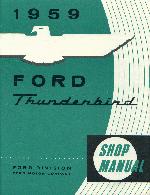If I remember from my youth of knuckle banging, the difference between a dry/wet compression test is that dry is for ring testing and wet is for valve testing. It has been at least 30 years since I have had to think about this, would anyone care to refresh me on this subject. Some of the old paper work that came w/ the bird mentions low compression on one of the holes.
Announcement
Collapse
No announcement yet.
wet/dry compression check-difference?
Collapse
X
-
wet/dry compression check-difference?
Russell Cothren
1960 Thunderbird hardtop
1970 F 350 flatbed
[/SIGPIC]
"They are all crazy, we just have our favorites"Tags: None -
Are you cranking the engine already?Member, Sons of the American Revolution
CLICK HERE to see my custom hydraulic roller 390 FE build.
"We've got to pause and ask ourselves: How much clean air do we need?"
--Lee Iacocca
From: Royal Oak, Michigan -
Not cranking yet.
Not cranking yet. It'll be a while. I was just trying to remember the procedure from yester-year. I was looking through the advertisment forum. What a great resource. If I had an enheritance, I know where it would go. Is the shop manual that you all speak of: orange w/ t-bird logo? That is what came w/ mine. Looks like a ford dealer/garage manual.Russell Cothren
1960 Thunderbird hardtop
1970 F 350 flatbed
[/SIGPIC]
"They are all crazy, we just have our favorites"Comment
-
wet/dry compression check-difference?
Russell, I am not sure what color the '60 Shop Manual is. My '59 is green with a white Tbird on it and down at the lower right it says Shop Manual.. If that is the Shop Manual that you have it should say that on the cover. The Shop Manual covers everything about your Tbird that is in it and on it. If it does not say Shop Manual on it, then order one from one of the Tbird parts houses. Over the years, I have dealt mainly with The Bird Nest in Oregon, and The Bird House in Delaware, and Rock Auto. I have found that the guys at the two Bird parts houses really know their Tbirds. Both of them also have parts cars they can pull used parts from.
Here's one, Ray:

Here is what a 1960 Squarebird Shop Manual looks like and as you can see, it says Shop Manual on it.Attached FilesLast edited by simplyconnected; December 5, 2014, 04:44 PM.
Ray Clark - Squarebirds Administrator
The Terminator..... VTCI #11178 ITC #6000 Yellow Mustang Registry (YMR) #12188
Contact me via Private Message for my email address, or Call (Cell) 210-875-1411
https://www.squarebirds.org/picture_gallery/TechnicalResourceLibrary/trl.htm
Faye's Ovarian Cancer Memorial Website.
https://faye.rayclark.info/index.htmlComment
-
That's mine as well. Chocked full of good information.Russell Cothren
1960 Thunderbird hardtop
1970 F 350 flatbed
[/SIGPIC]
"They are all crazy, we just have our favorites"Comment
-
If the engine is in running condition, I always liked to get it driven and warmed up and cleaned out. Then do the compression. I wanted the readings I got to reflect the condition of a running and warmed up motor, not a sitting one. I also didn't want a random piece of carbon crud on a valve face making me think I had a bad cylinder.
So . . . you get an initial reading "as is". Then add some oil to temporarily seal the rings which, as you point out, narrows things down to information about them, and by deduction, about the valves.
You want to be careful not to add too much oil or the reduced volume for air gives you an artificially high reading afterwards.
I always did it with the throttle wide open so as to allow as much air in as possible; probably others disagree with that.
An alternative is a leakdown tester. You get to sit and listen to air escaping by both rings and valves as well as getting % readings. I have never used one on a large motor like the TBirds; just motorcycles. Perhaps one of the members has experience and can also recommend a good source.
Let us know how you make out!!
John1958 Hardtop
#8452 TBird Registry
http://tbird.info/registry/DataSheet...r~equals~8452)
photo: http://www.squarebirds.org/users/joh...d_June2009.jpg
history:
http://www.squarebirds.org/users/johng/OCC.htmComment




Comment